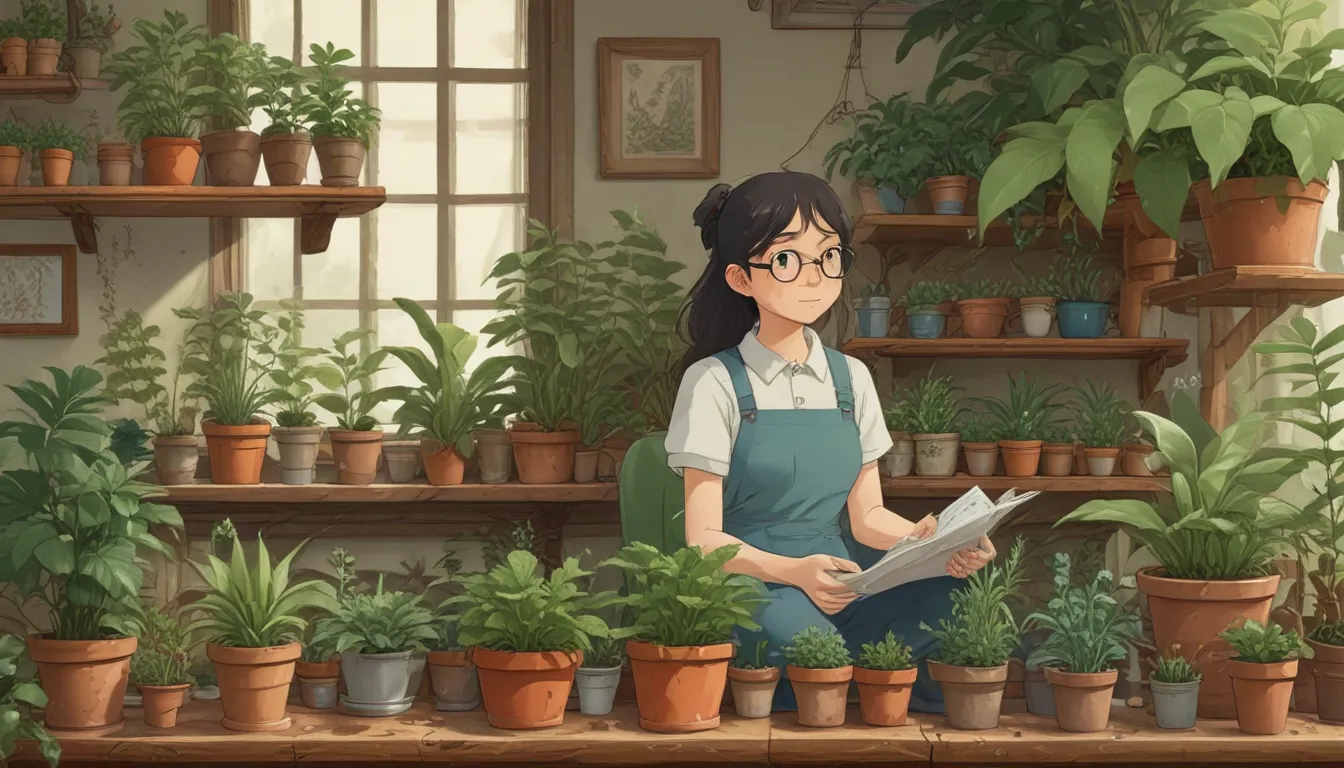Maximizing Health and Growth: A Comprehensive Guide to Fertilizing Houseplants

Welcome, plant lovers! If you’re looking to take your indoor gardening skills to the next level, you’ve come to the right place. Just as we strive to create the perfect environment for our houseplants with ideal lighting, watering, and temperature conditions, providing the right nutrients is equally crucial for their overall health and growth.
In this detailed guide, we’ll delve into the world of plant nutrition, explore different ways to fortify your houseplant soil, discuss the ins and outs of liquid feeding, and learn how to identify and address potential nutrient deficiencies in your precious green friends. So grab your watering can and let’s get started!
What You’ll Learn
Let’s kick things off by understanding the essential nutrients that plants need to thrive. Whether you’re a seasoned plant parent or just starting your indoor garden, it’s important to grasp the basics of plant nutrition to set your plants up for success. Here’s what we’ll cover in this article:
- Nutrients that Plants Need
- Fortifying Houseplant Soil
- Liquid Feeding
- Addressing Nutrient Deficiencies
Nutrients that Plants Need
Plants, like all living organisms, require a combination of macro- and micronutrients to carry out their biological functions effectively. The primary macronutrients – nitrogen (N), phosphorus (P), and potassium (K) – play a crucial role in supporting plant growth and development.
When selecting fertilizers for your houseplants, keep an eye out for the NPK ratio, which indicates the relative percentage of nitrogen, phosphates, and potassium in the product. Each nutrient serves a specific purpose in promoting plant health:
- Nitrogen: Essential for protein biosynthesis and chlorophyll production, leading to lush foliage growth.
- Phosphorus: Facilitates photosynthesis, root development in young plants, and flower/fruit formation in mature specimens.
- Potassium: Aids in water and nutrient transport, enzyme activation, and overall plant vigor.
In addition to these primary macronutrients, plants also require secondary macronutrients such as calcium, magnesium, and sulfur, along with essential micronutrients like magnesium, boron, copper, iron, manganese, molybdenum, nickel, and zinc. These nutrients, though needed in smaller quantities, are equally vital for healthy plant growth.
To ensure optimal growth for your houseplants, choose fertilizers that provide a balanced mix of macronutrients and micronutrients tailored to your plants’ specific needs.
Fortifying Houseplant Soil
One of the key ways to support your houseplants’ nutrient requirements is by fortifying the growing media with fertilizers. There are two main types of fertilizers you can use – slow release and fast release – each offering unique benefits:
- Slow Release Fertilizers: Ideal for long-term nutrient supply, slow-release fertilizers gradually release essential nutrients into the soil, supporting consistent plant growth.
- Fast Release Fertilizers: Designed for immediate nutrient uptake, fast-release fertilizers provide a quick boost to plants in need of rapid nourishment.
When repotting your houseplants, consider mixing slow-release fertilizers into the soil to provide a steady supply of nutrients over time. Organic fertilizers like Espoma Organic Garden-Tone and Dr. Earth Pure Gold are excellent options for promoting healthy plant growth while enriching the soil with essential nutrients.
Espoma Garden-Tone, with its balanced NPK ratio of 3-4-4, is a versatile choice suitable for various houseplant varieties, while Dr. Earth Pure Gold offers a balanced nutrient blend for robust plant growth.
For ongoing soil enrichment, consider using plant food spikes like Jobe’s Fertilizer Spikes for Houseplants, which provide a convenient way to deliver essential nutrients directly to the root zone.
Liquid Feeding
In addition to fortifying the soil, liquid feeding offers a convenient way to provide immediate nourishment to your houseplants. Water-soluble fertilizers, available in powder or liquid forms, can be dissolved in water and applied directly to the soil during watering.
Opt for high-quality water-soluble fertilizers like Dr. Earth Pump and Grow All Purpose food, which offers a balanced NPK ratio of 1-1-1 for optimal plant nutrition. By following the recommended mixing instructions, you can ensure that your plants receive the right amount of nutrients for healthy growth and development.
When using liquid fertilizers, it’s important to adjust the frequency of application based on your plants’ growth stage and seasonal requirements. During the warmer months, feed your houseplants about once a month, reducing the frequency during winter when plants undergo a period of slower growth.
By incorporating liquid feeding into your plant care routine, you can supplement your houseplants with essential nutrients to support their overall health and vitality.
Addressing Nutrient Deficiencies
Nutrient deficiencies can manifest in various ways, impacting plant health and growth. Common symptoms of nutrient deficiency include leaf yellowing (chlorosis) and stunted growth, indicating a lack of essential nutrients in the soil.
Iron chlorosis, characterized by yellowing of leaf tissue except for the veins, is a prevalent deficiency in houseplants. To address iron deficiency, consider using chelated iron products or blood meal to supplement the missing nutrient.
Magnesium deficiency is another common issue, especially in houseplants that require frequent watering. Adding Epsom salts to your watering routine can help replenish magnesium levels in the soil, supporting healthy plant growth and development.
To identify and treat nutrient deficiencies effectively, familiarize yourself with the specific needs of your plant species and adjust your feeding regimen accordingly. By monitoring your plants for signs of deficiency and implementing targeted solutions, you can ensure that your houseplants receive the necessary nutrients for optimal health and vitality.
Food for Thought
As you care for your houseplants and nurture them to thrive in your home, remember to consider their unique nutritional requirements and provide them with the essential nutrients they need to flourish. By fortifying the soil, using liquid feedings, and addressing potential deficiencies promptly, you can create an environment that supports healthy, vibrant plant growth.
Next time you tend to your indoor garden, take a moment to observe your houseplants and assess their nutrient needs. Whether it’s adjusting your fertilizing routine or exploring new feeding options, there are plenty of ways to enhance your plant care practices and promote optimal growth for your leafy companions.
We hope this comprehensive guide has provided valuable insights into the world of fertilizing houseplants and empowered you to take your indoor gardening skills to new heights. If you have any tips or experiences to share about fertilizing your houseplants, we’d love to hear from you in the comments below!
For more expert advice on caring for your houseplants, be sure to explore our other informative guides:
- Houseplant Propagation for Beginners
- How to Bottom Water Houseplants
- Houseplant Primer: A Guide to Basic Care and Durable Plants
Thank you for joining us on this plant-filled journey, and may your indoor garden thrive with lush greenery and abundant blooms!





